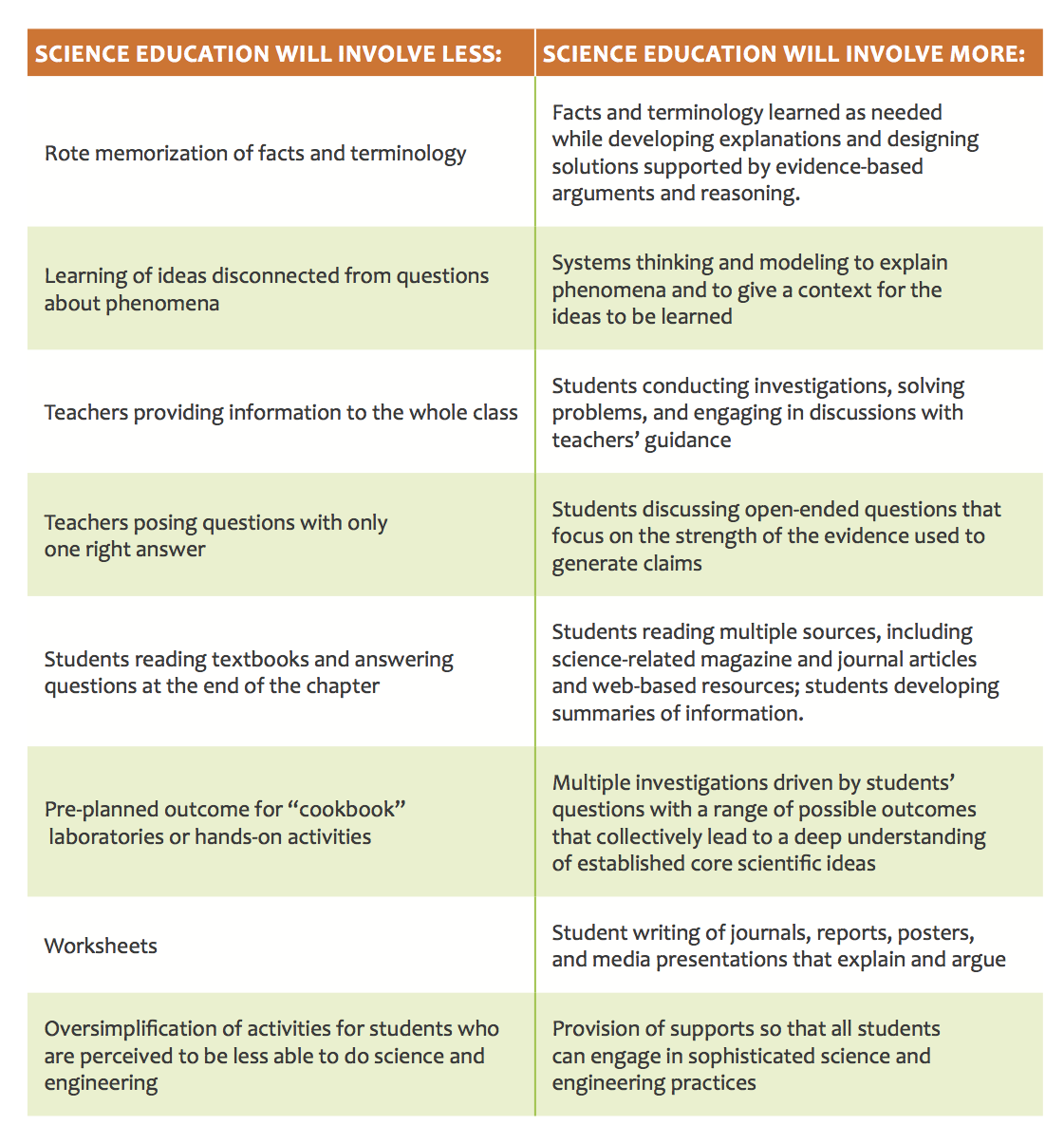Originally posted on CORElaborate here (re-posted here in its entirety with the author’s – me – permission).
Time for NGSS Shifts!
I wrote a series of posts on the shifts in teaching called for in the Common Core English Language Arts (ELA) standards. Now it’s time to look at the shifts called for by the Next Generation Science Standards (NGSS) because they are looking to change the way teachers teach Science and the ways students learn Science.
The NGSS has a document called A New Vision for Science Education where they outline the shifts required to truly implement the next generation of Science standards in our classes. I like the way they laid out the document as it’s easy to read. Looking at the examples they give, the NGSS is really just making sure we are using 21st Century strategies that are most likely to prepare our students for THEIR future and NOT OUR past. I’m all over these shifts!
Science standards of the past, at least in WA state, focused a bit too heavily on facts. Focusing on facts makes it easy to assess “learning” because you can assume students are learning those facts with multiple choice type assessments. Multiple choice type assessments are not very accurate at showing what learners actually know and they are not the best way to show learning of Science (we need to be careful what we do with the data collected from multiple choice assessments)! Focusing on facts leads to instruction that focuses on memorization. Also not the best way to learn to DO Science. Personally, I think any Science assessment needs to have an experimental segment where kids are working in teams coming up with questions, designing procedures and coming up with answers to their questions based on the results of their experimentation.
I am impressed with the way the NGSS are organized on their website. The NGSS does something no other Science standards I’ve worked with did, they have what they call the three dimensions. Science teachers who have been working with the NGSS know this all too well. I myself need repetition to really get something so I need to go over this again and again.
First, there are the DCI’s or Disciplinary Core Ideas, let’s call this one the first dimension of the NGSS. Those are the actual Science standards most of us are familiar with because they are the Science content students should be learning. When searching the standards through the DCI’s one finds that there are three Earth Science DCI standards. Let’s take Middle School Earth Science Standard 2:
Earth Systems is the big idea that can be broken down into more detailed DCI’s like this:

Next, the NGSS included Cross Cutting Concepts or CCC’s, which I will the second dimension. These concepts go across all the the Science disciplines and are even relevant in other disciplines. For example, the Earth Systems standard includes the following CCC’s:
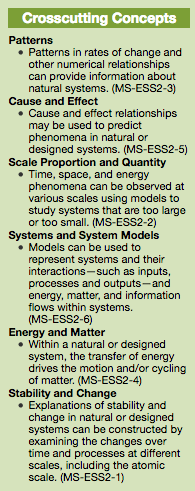
Finally, there are the Science and Engineering Practices or SEP’s, the third dimension. Integrating Engineering into Science is a huge addition to these new standards. I don’t remember any Engineering in any of the Science standards I have worked with. Here are the SEP’s for the Earth Systems standard:

The Earth System standard, MS-ESS2 has six performance expectations of ways students can show understanding of the standard. Here’s is one standard that most closely aligns to our study of Mt Saint Helens, the second standard in the series: Click here to see the second performance expectation for the standard.
Here’s where the writers of these standards did some amazing work; they embedded a DCI along with an SEP and a CCC into every single performance expectation! I know, I still think it’s brilliant. And if you use the website you can mouse over every performance expectation and see what part is the DCI, the SEP and the CCC!
They are pretty cool! Go try it out!
So you’re ready to align your curriculum to the NGSS1 or you are going to create a new NGSS unit2. How do you start it? Start with a phenomenon! This is right from the Using Phenomena in NGSS-Designed Lessons and Units, “Natural phenomena are observable events that occur in the universe and that we use our science knowledge to explain or predict. The goal of building knowledge in science is to develop general ideas, based on evidence, that can explain and predict phenomena. Engineering involves solutions to problems that arise from phenomena, and using explanations of phenomena to design solutions. In this way, phenomena are the context for the work of both the scientist and the engineer.” You know, this reminds me of INTO activities that teachers have used to hook their students into a new unit of study. It makes sense to give students something that starts them thinking about the topic they are going to study to start the inquiry process! Just make sure that your phenomena are such that can lead to deeper inquiry throughout your unit.
The reason I start the year with Mt Saint Helens is one of the best reasons ever: I get to take my 6th graders to Mt Saint Helens early in the year! It’s part of our Camp Cispus three-day and three-night 6th grade trip. Talk about starting with a phenomenon!
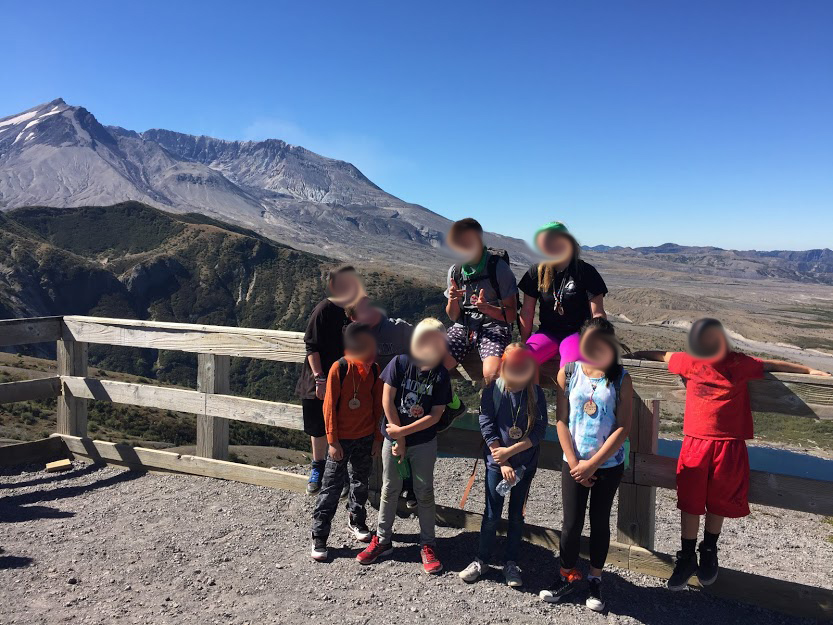
Here we are at Windy Ridge facing Mt Saint Helens!
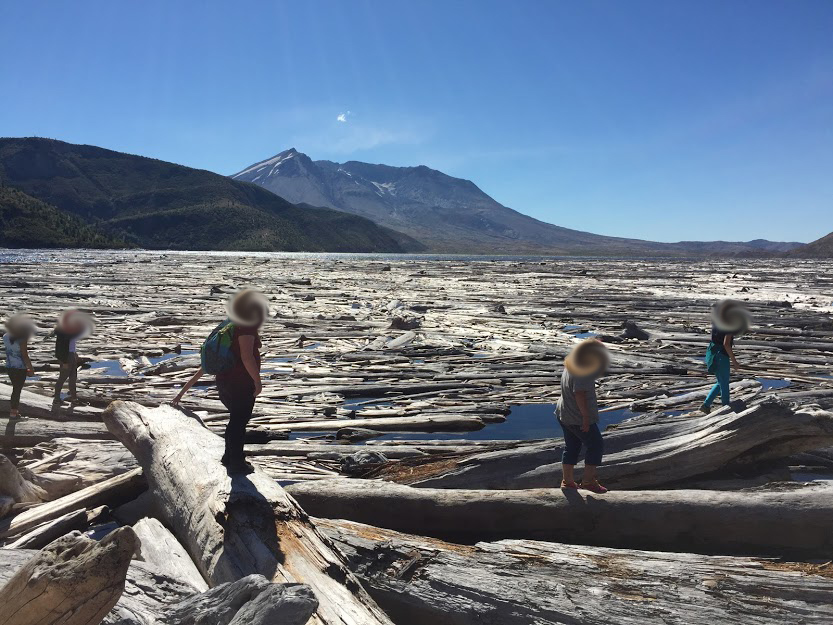
Here we are looking at the crater from Spirit Lake!
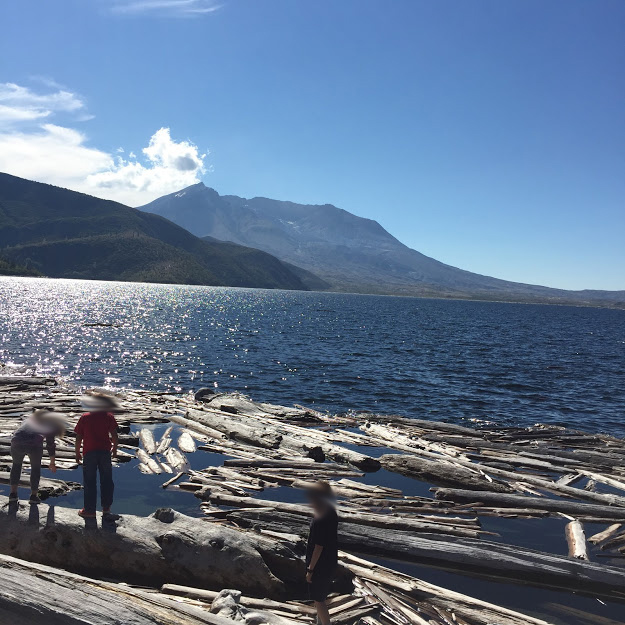
We lucked out and got the most gorgeous day EVER!
Here’s the famous video pieced together from the photographs that survived the eruption the moment Mt Saint Helens erupted! Thank goodness the photographers were right there to get those pictures or countless generations would only see it via animated models.
So I took the MS-ESS2 standard, specifically the performance expectation MS-ESS2-2, using the volcano as the geoscience process and ask students the following question breaking down the performance expectation to scaffold their writing:
Explain how geoscience processes (volcanoes are an example of a geoscience process) usually behave gradually (meaning slowly) but are punctuated by catastrophic events?
Construct an explanation based on evidence you have learned in class for how Mt Saint Helens has changed Earth’s surface at varying times and spatial scales (spatial scales mean areas close to the volcano, farther away, and really far away) since 1980.
Every performance expectation has a support called evidence statements that you can use to make a rubric or proficiency scale. (I prefer the concept of proficiency scales over rubrics.) Here’s the proficiency scale I put together for Mt Saint Helens.
Students use this website from the USGS to gather evidence of how Mt Saint Helens changed the surface of the Earth back in 1980 as well as since then through repeated eruptions and expulsions of lava in the crater where the lava dome is growing and growing.
Not a perfect lesson or activity but it’s one of my attempts at helping my students learn Science NGSS-style. We’re all learners in this wonderful journey. 🙂
1. I’ve been told that aligning existing curriculum to NGSS is not the best but being 100% honest, it’s less time consuming than the creating curriculum from scratch. Our job is hard enough without having to be curriculum designer AND teacher (I work in a small district where we don’t have a curriculum person; we all have to do that for ourselves or for our departments). Go Back.
2. Until they come out with NGSS aligned curricula, which I hear there are some out there right now, many teachers are creating their own, which is a huge burden, especially on teachers who teach multiple subjects. Go Back.

